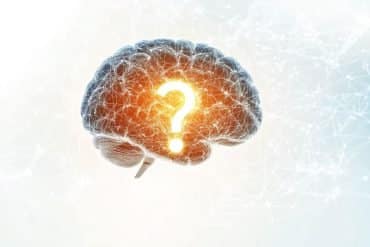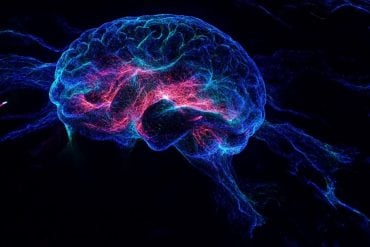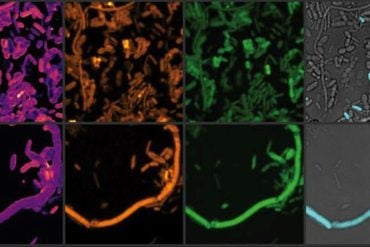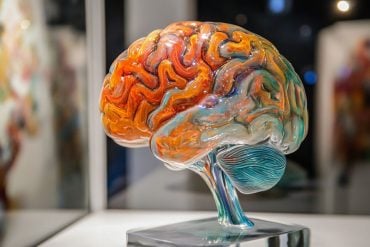Summary: A neuroimaging study examines the brain’s response to social exclusion.
Source: University of Pennsylvania.
In response to social exclusion, people with diffuse friend networks show more dynamic brain activity than those with close-knit social circles.
When someone talks about using “your network” to find a job or answer a question, most people understand that to mean the interconnected web of your friends, family, and acquaintances. But we all have another key network that shapes our life in powerful ways: our brains.
In the brain, impulses whiz from one brain region to another, helping you formulate all of your thoughts and decisions. As science continues to unlock the complexities of the brain, a group of researchers has found evidence that brain networks and social networks actually influence and inform one another.
The study, published today in the Proceedings of the National Academy of Sciences (PNAS) looked at the brain’s response to social exclusion under fMRI, particularly in the mentalizing system, which includes separate regions of the brain that help us consider the views of others.
It found that people who show greater changes in connectivity in their mentalizing system during social exclusion compared to inclusion tend to have a less tightly knit social network — that is, their friends tend not to be friends with one another. By contrast, people with more close-knit social networks, in which many people in the network tend to know one another, showed less change in connectivity in their mentalizing regions.
“The significance of what we found is that people who are surrounded by different types of social networks use their brains differently,” says senior author Emily Falk, Ph.D., Associate Professor of Communication, Psychology, and Marketing at the University of Pennsylvania’s Annenberg School for Communication and director of its Communication Neuroscience Lab. “In particular, we find that those who have a less densely connected social network show more dynamic responses in the mentalizing system. This might indicate that they are thinking differently about how to navigate their social relationships under different circumstances.”
To create the feeling of social exclusion, the researchers used a virtual ball-tossing game called Cyberball with 80 boys ages 16-17. While in the fMRI machine, each participant saw a screen with two other cartoon players — who they believed to be controlled by real people — and a hand to represent themselves. All three participants in the game take turns tossing a virtual ball to one another.
For the first phase of the game, the virtual players include the test subject, tossing him the ball frequently. The game then shifts to exclusion mode, and the virtual players stop throwing the ball to the participant.
“It’s surprising how strong the effect is on participants,” says lead author Ralf Schmälzle, Ph.D., Assistant Professor at Michigan State University, who notes that adolescents are particularly sensitive to social rank. “They have to think through, ‘What is going on? Did I do something wrong?’ Although Cyberball may sound like an artificial task, it is actually quite involving for people. That makes it a good task to study the brain effects of social exclusion in a controlled but powerful way.”
The data allowed the researchers to look at the activity among different brain regions comprising the mentalizing system. Unlike past neuroimaging studies of exclusion, they were not looking for average activity levels, but rather the relationship among their activity over time.
“These regions are in different places in the brain, but they show a similar response during exclusion,” says Schmälzle. “They go up and down and up and down, almost as if they’re dancing together, doing the same moves over time, and this ‘coupling’ of their activity increases during social exclusion.”
The researchers also were able to access, with permission, the test subjects’ Facebook data, giving them a snapshot of their friendship networks.
In “dense” networks, close-knit friend groupings mean that many of a person’s friends are also friends with each other. Talk to one friend, and another is likely to hear the story. In “Sparse” networks, a person’s friends tend to be more far-flung, not knowing one another. If you talk to friend A, you would not expect friend B to know.
The test subjects who showed the greatest brain connectivity during social exclusion were those in sparse networks.
While the study cannot pinpoint why this is the case, the authors see possible explanations.
“One possibility is that if not all your friends know each other, you need to more dynamically use your mentalizing system in a day-to-day context,” says Falk. “People with a greater diversity of friends may need to scroll through different interpretations of what’s going on.”
On the other hand, Schmälzle says, it also would seem possible that people with different inclinations to think about social situations like exclusion in a particular way, might feel more confident in specific types of networks and thus tend to set up their social networks accordingly.
“The study of brain and social network dynamics together is extremely new,” says Danielle Bassett, Ph.D., a co-author on the study and a Penn Associate Professor of Bioengineering. But, she notes, it holds great promise for understanding more accurately how the brain handles complex tasks like learning a new skill or picking up on and responding to social cues.
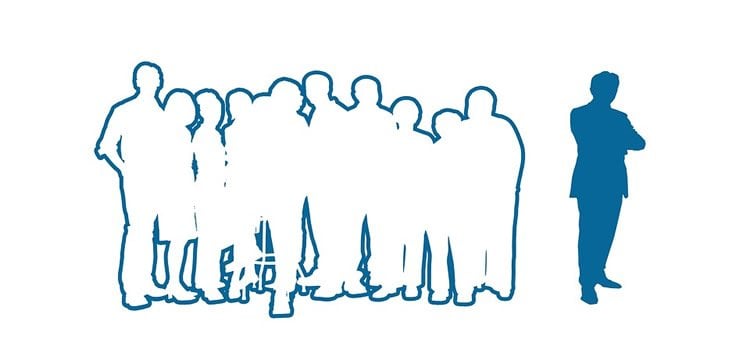
“Social network analysis and thinking about social networks has been around a long time in Sociology,” says Falk, “but it’s only recently that these kind of quantitative measures of social networks have been combined with an understanding of the brain. How do your brain dynamics affect your social network and how does your social network affect your brain? We’re at the very tip of the iceberg right now.”
“A longstanding feature of neuroscience research has been to ask participants to sit in an isolated room or scanner and make decisions about stimuli,” says co-author Jean Vettel, Ph.D., of the U.S. Army Research Laboratory and visiting fellow at Penn, “but this research highlights the critical need to understand social influence and context if we truly want to understand how a person will respond and reason about the world.”
In addition to Schmälzle, Falk, Bassett, and Vettel, authors on “Brain connectivity dynamics during social interaction reflect social network structure” include Matthew Brook O’Donnell, Ph.D. (University of Pennsylvania); Javier O. Garcia, Ph.D. (U.S. Army Research Lab); Christopher N. Cascio (University of Pennsylvania); and Joseph Bayer, Ph.D. (The Ohio State University).
Source: Julie Sloane – University of Pennsylvania
Image Source: NeuroscienceNews.com image is in the public domain.
Original Research: Abstract for “Brain connectivity dynamics during social interaction reflect social network structure” by Ralf Schmälzle, Matthew Brook O’Donnell, Javier O. Garcia, Christopher N. Cascio, Joseph Bayer, Danielle S. Bassett, Jean M. Vettel, and Emily B. Falk in PNAS. Published online May 2 2017 doi:10.1073/pnas.1616130114
[cbtabs][cbtab title=”MLA”]University of Pennsylvania “Unravelling Fluid Flow in the Brain.” NeuroscienceNews. NeuroscienceNews, 2 May 2017.
<https://neurosciencenews.com/social-exclusion-brain-activity-6566/>.[/cbtab][cbtab title=”APA”]University of Pennsylvania (2017, May 2). Unravelling Fluid Flow in the Brain. NeuroscienceNew. Retrieved May 2, 2017 from https://neurosciencenews.com/social-exclusion-brain-activity-6566/[/cbtab][cbtab title=”Chicago”]University of Pennsylvania “Unravelling Fluid Flow in the Brain.” https://neurosciencenews.com/social-exclusion-brain-activity-6566/ (accessed May 2, 2017).[/cbtab][/cbtabs]
Abstract
Brain connectivity dynamics during social interaction reflect social network structure
Social ties are crucial for humans. Disruption of ties through social exclusion has a marked effect on our thoughts and feelings; however, such effects can be tempered by broader social network resources. Here, we use fMRI data acquired from 80 male adolescents to investigate how social exclusion modulates functional connectivity within and across brain networks involved in social pain and understanding the mental states of others (i.e., mentalizing). Furthermore, using objectively logged friendship network data, we examine how individual variability in brain reactivity to social exclusion relates to the density of participants’ friendship networks, an important aspect of social network structure. We find increased connectivity within a set of regions previously identified as a mentalizing system during exclusion relative to inclusion. These results are consistent across the regions of interest as well as a whole-brain analysis. Next, examining how social network characteristics are associated with task-based connectivity dynamics, we find that participants who showed greater changes in connectivity within the mentalizing system when socially excluded by peers had less dense friendship networks. This work provides insight to understand how distributed brain systems respond to social and emotional challenges and how such brain dynamics might vary based on broader social network characteristics.
“Brain connectivity dynamics during social interaction reflect social network structure” by Ralf Schmälzle, Matthew Brook O’Donnell, Javier O. Garcia, Christopher N. Cascio, Joseph Bayer, Danielle S. Bassett, Jean M. Vettel, and Emily B. Falk in PNAS. Published online May 2 2017 doi:10.1073/pnas.1616130114



